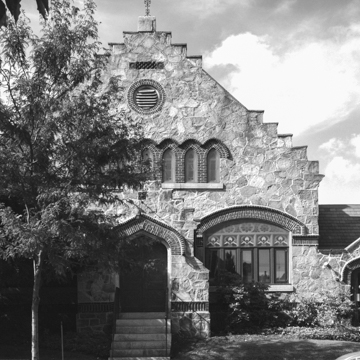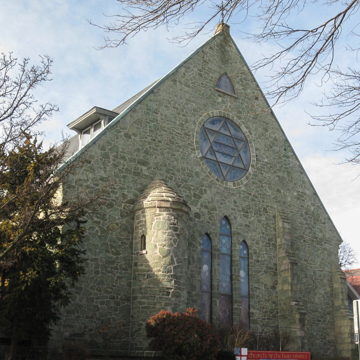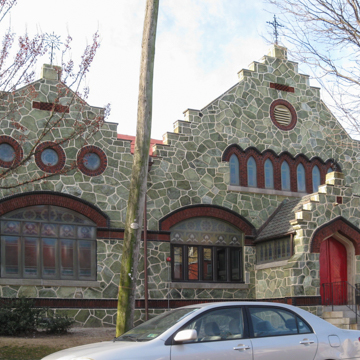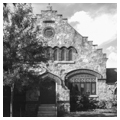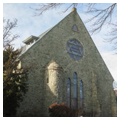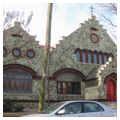Built in the ecclesiastical Victorian Gothic in the local green serpentinite stone, it was, according to parish records, designed by its rector, John Bolton. The tower of the same serpentinite, since removed because of incipient structural failure, was begun by Bolton and completed by T. Roney Williamson in 1889. The adjacent parish building in serpentinite
You are here
Church of the Holy Trinity Episcopal Church
1868, John Bolton. 238 S. High St.
If SAH Archipedia has been useful to you, please consider supporting it.
SAH Archipedia tells the story of the United States through its buildings, landscapes, and cities. This freely available resource empowers the public with authoritative knowledge that deepens their understanding and appreciation of the built environment. But the Society of Architectural Historians, which created SAH Archipedia with University of Virginia Press, needs your support to maintain the high-caliber research, writing, photography, cartography, editing, design, and programming that make SAH Archipedia a trusted online resource available to all who value the history of place, heritage tourism, and learning.


